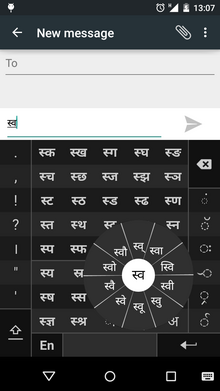
An input method (or input method editor, commonly abbreviated IME) is an operating system component or program that enables users to generate characters not natively available on their input devices by using sequences of characters (or mouse operations) that are available to them. Using an input method is usually necessary for languages that have more graphemes than there are keys on the keyboard.
Contents
- Implementations
- Relationship between the methodology and implementation
- See also
- Related techniques
- Input methods versus language
- Specific input methods
- Input methods for handheld devices
- Virtual keyboards
- References
- External links
For instance, on the computer, this allows the user of Latin keyboards to input Chinese, Japanese, Korean and Indic characters. On hand-held devices, it enables the user to type on the numeric keypad to enter Latin alphabet characters (or any other alphabet characters) or touch a screen display to input text. On some operating systems, an input method is also used to define the behavior of the dead keys.
